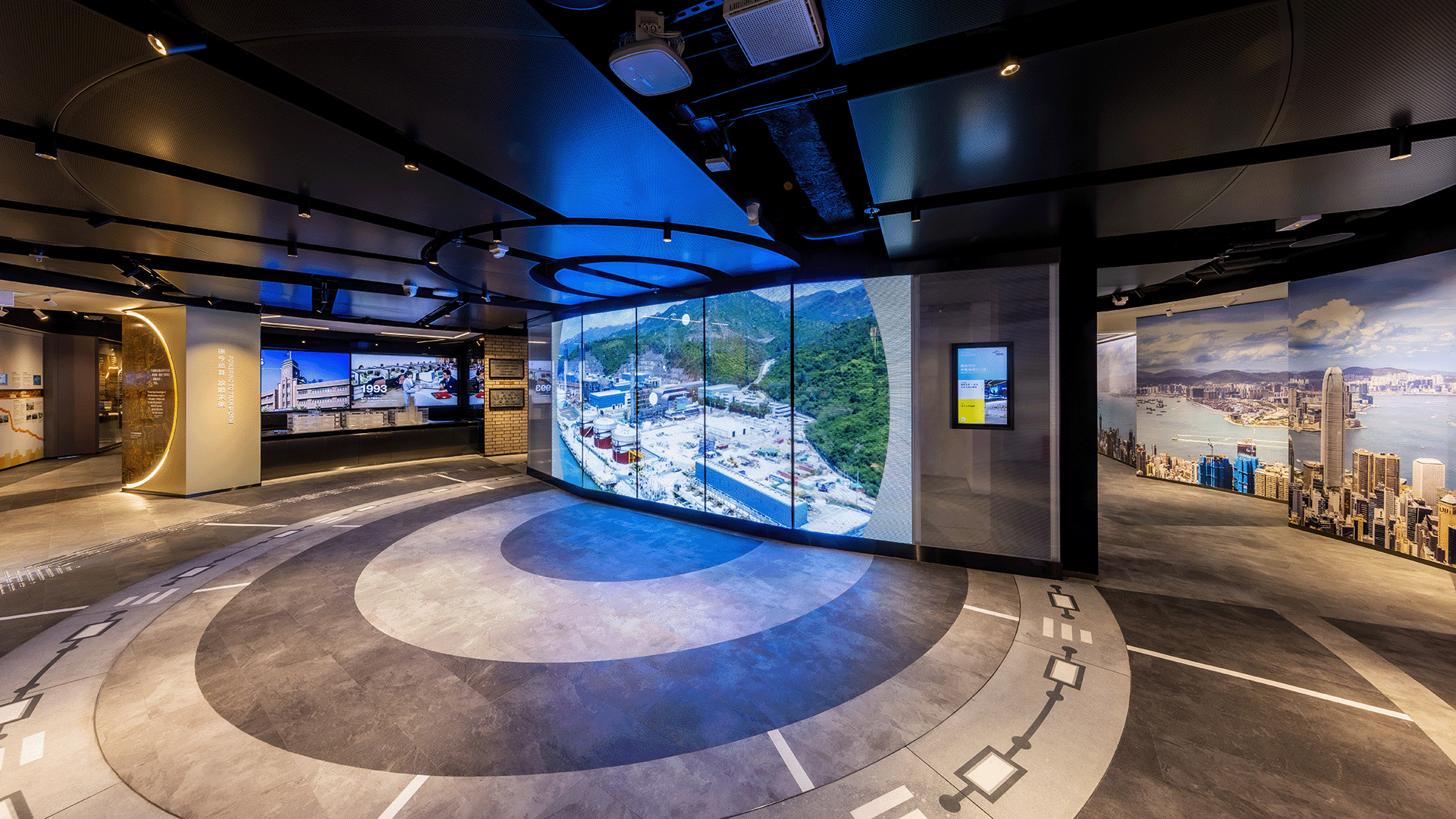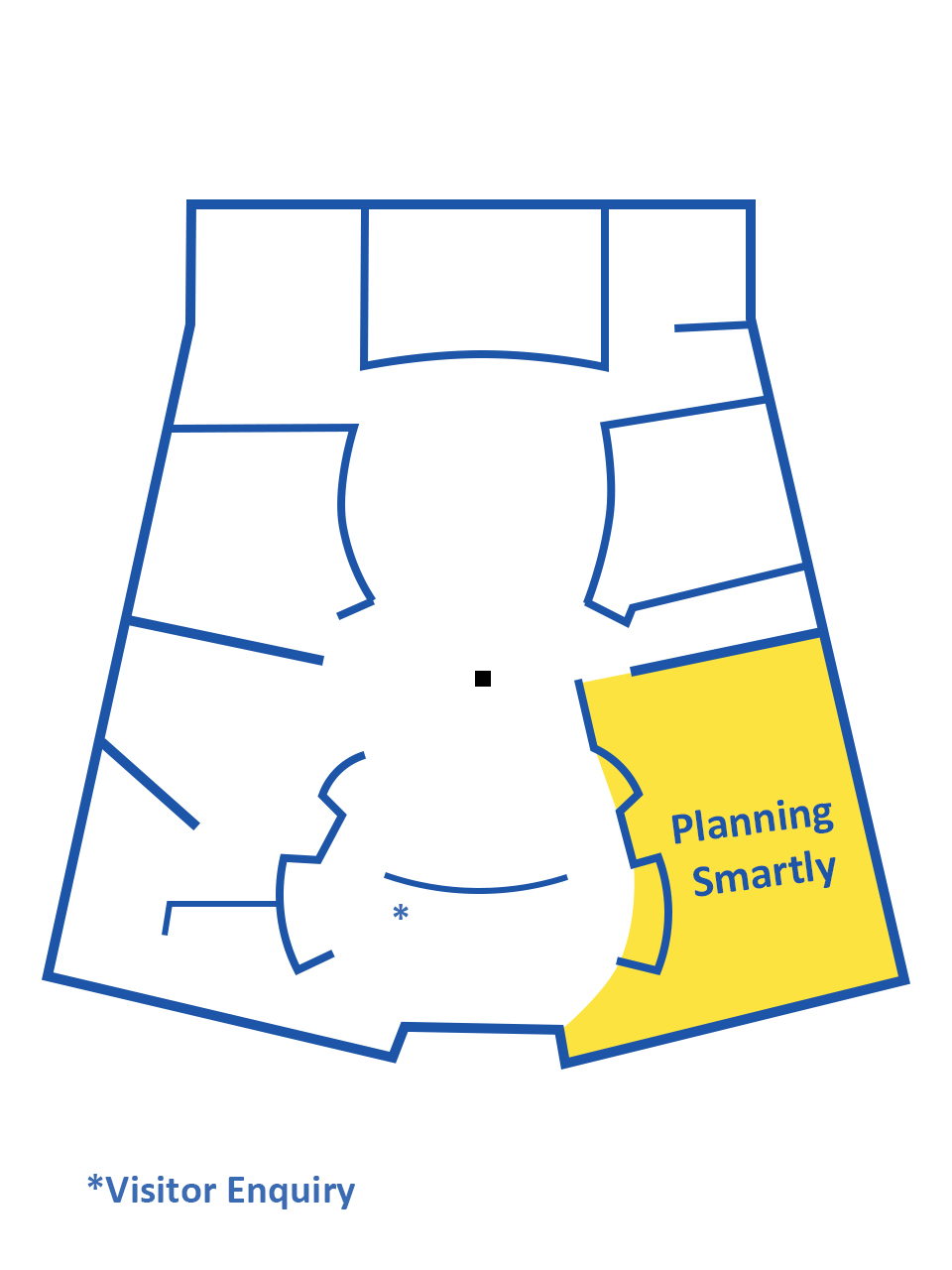Planning Smartly
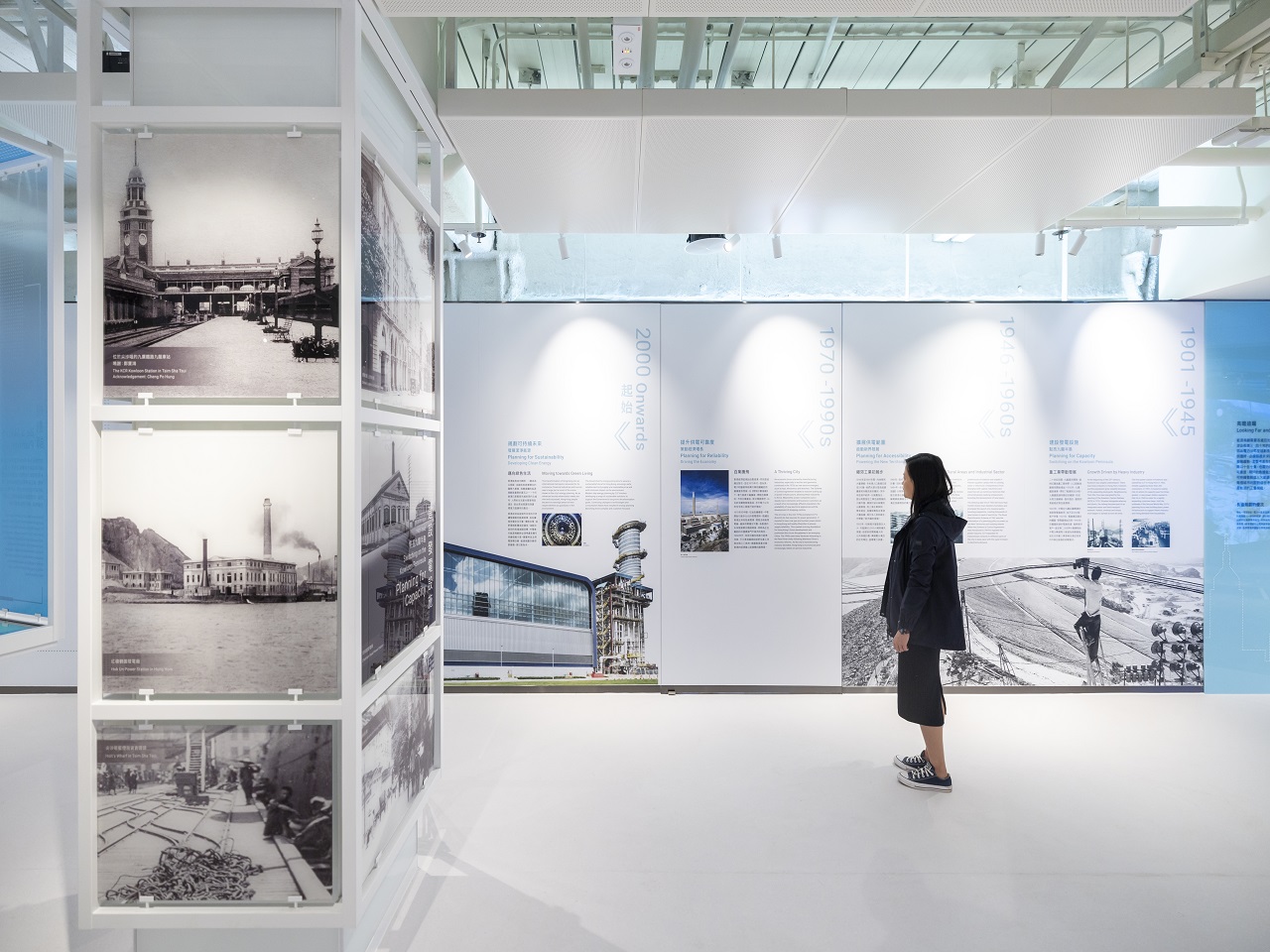
10. 【Looking Ahead and Beyond】
CLP has been at the heart of Hong Kong for more than a century. It has adapted its energy planning priorities to meet societal needs and expectations in different eras, balancing the demands for a reliable power supply and reasonable tariffs with the imperative of environmental protection.
Our energy planning journey begins with the opening of CLP’s first power plant on Chatham Road in Hung Hom in the early 20th century, shown in the era titled ‘Planning for Capacity’. The plant was built in an industrial area primarily to supply electricity to factories and commercial customers in Kowloon and support the district’s rapid development.
‘Planning for Accessibility’ tells the story of the 1960s when CLP backed the government’s Rural Electrification Scheme and brought electricity to communities in the New Territories and outlying islands. This expansion of the transmission network unlocked significant development potential in remote villages and had a profound impact on the growth of these areas.
Since the 1970s, Hong Kong’s economy has enjoyed fast growth in all sectors, and a stable supply of electricity has been crucial. ‘Planning for Reliability’ became a priority, and the strategy established a solid foundation for Hong Kong’s economic golden era. Major generation facilities such as Castle Peak Power Station and Black Point Power Station were built and commissioned in this era.
Today, as we continue to reap the benefits of economic development, there is increasing public awareness of the importance of environmental protection. Sustainable development has become a global necessity. ‘Planning for Sustainability’ highlights the introduction of the latest gas-fired generation units at Black Point Power Station and the application of other new technologies to help Hong Kong move gradually towards net-zero power generation.
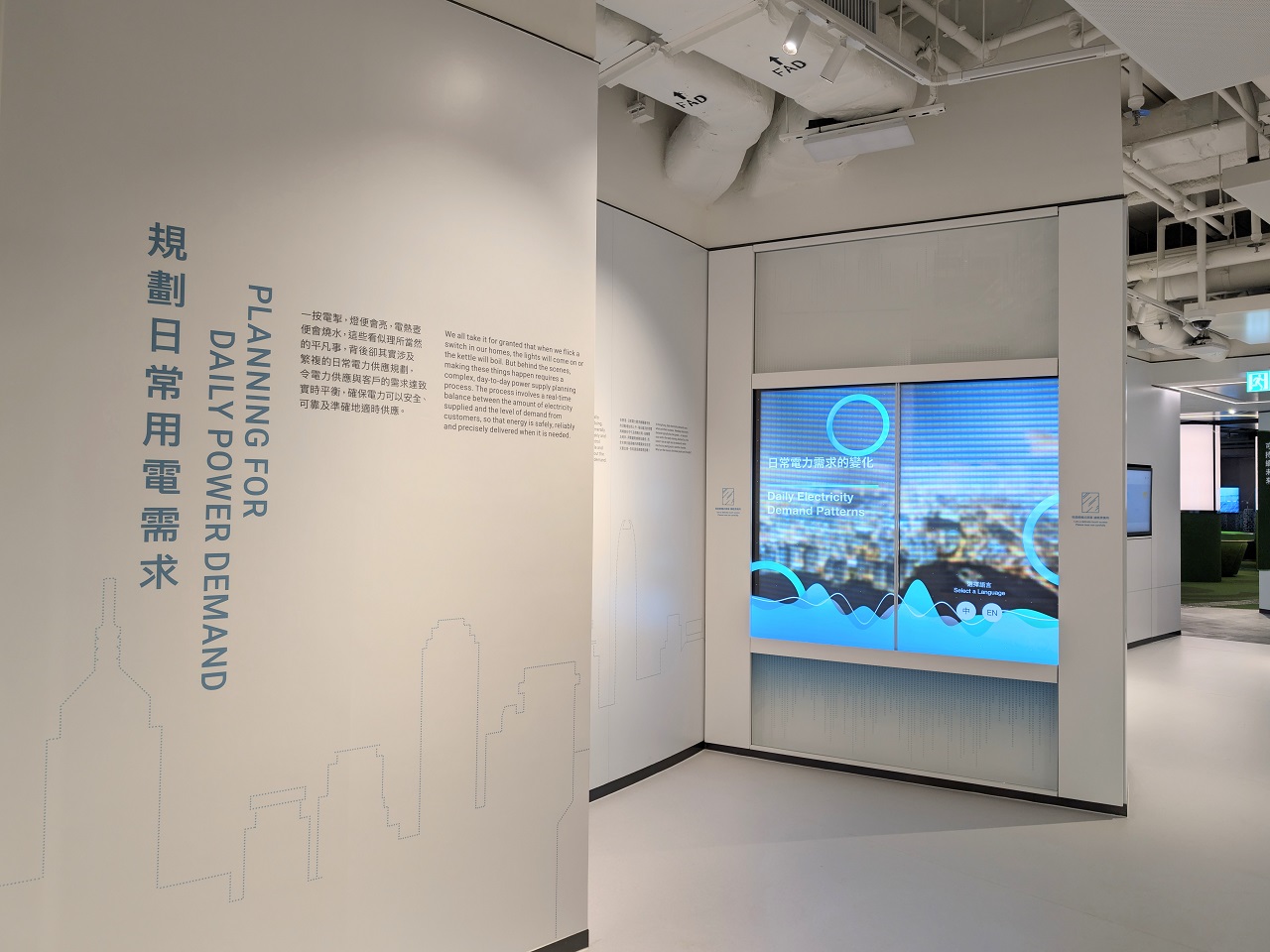
11. 【Daily Electricity Demand】
Electricity comes to us at the flick of a switch, and we can easily take it for granted. However, a stable power supply requires not only a comprehensive long-term energy planning but also meticulous arrangements around the clock to meet expected daily electricity demand.
In front of you is a touchscreen display showing electricity demand across different customer groups, seasons of the year, and scenarios.
Please tap on the button marked ‘Residential versus Commercial and Industrial’. This illustrates the distribution of electricity demand for different users over a 24-hour period. The blue line represents residential users while the orange line represents commercial users. Commercial electricity usage peaks during the day as the operation of different businesses across the city triggers surges in demand. By contrast, residential consumption peaks from the evening to the early hours when people return home from work to cook, watch TV, and do their laundry. Usage gradually declines as people go to sleep.
While predictable patterns emerge by day, by week, and by season, engineers need to remain flexible and make quick adjustments in response to special circumstances or changes in demand. For example, during the Olympic Games in Paris in 2024, many showpiece events took place in the early hours of the morning in Hong Kong, resulting in higher-than-usual nighttime electricity consumption. Control room engineers had to adapt to the surge in demand to ensure Hong Kong citizens could cheer their athletes on without missing a moment of the action or any important parts of their daily lives.
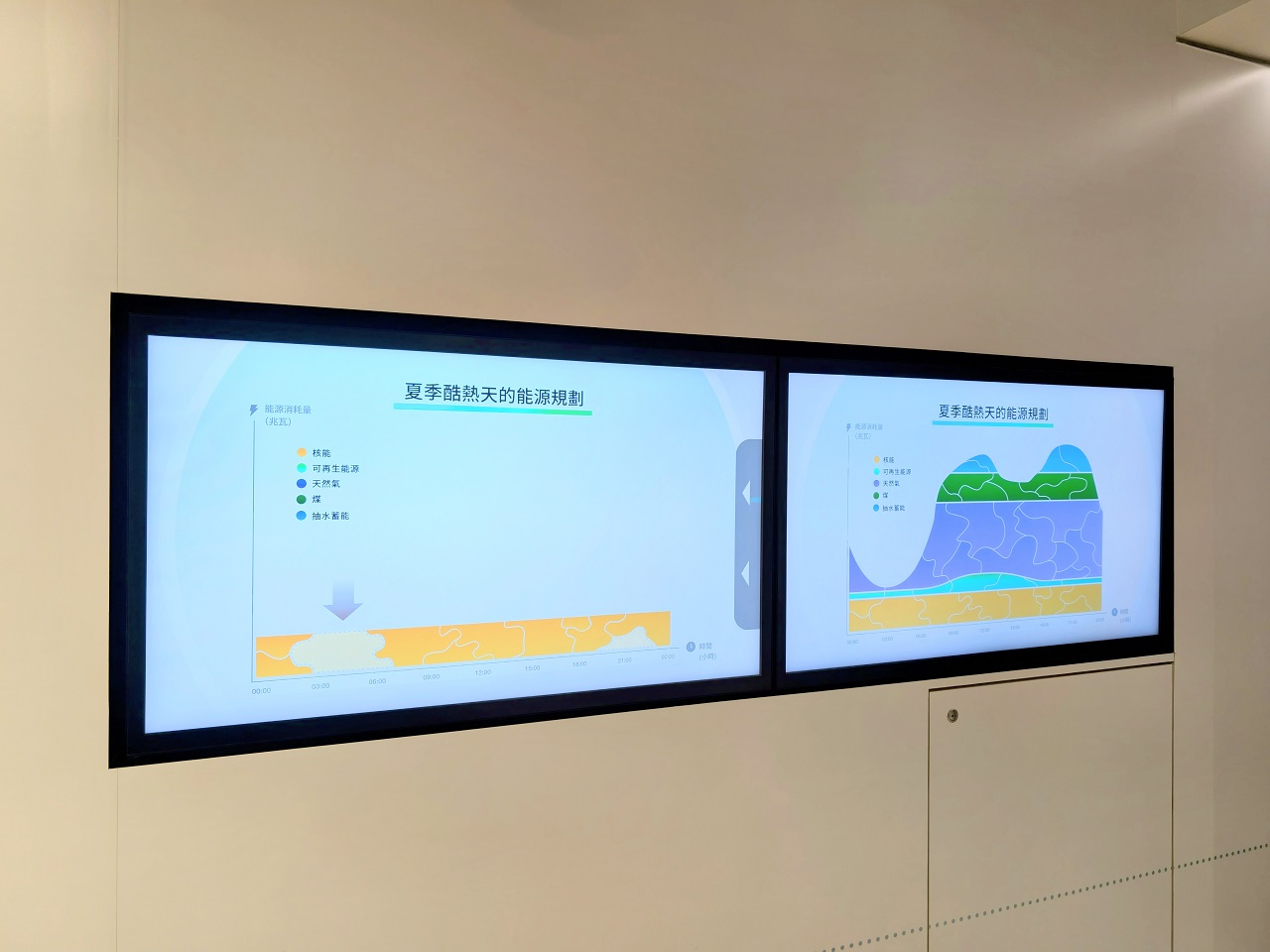
12. 【Electricity Supply and Fuel’s Characteristics】
Do you know what fuels are used to generate the electricity you consume? CLP has long adopted a diversified fuel mix to generate electricity, minimising excessive reliance on any one single energy source. The current fuel mix includes natural gas, nuclear energy, renewable energy, and coal, ensuring a safe and reliable power supply while maintaining reasonable tariffs and protecting our environment.
In front of you is a puzzle designed to test your reaction skills by asking you to select suitable energy patterns. When you finish the puzzle, you will see a distribution chart of electricity supply over 24 hours on a hot summer day that shows the characteristics of different energy sources. For instance, the yellow section at the bottom represents nuclear energy, which provides a stable and long-term supply to meet basic electricity needs because of its reliability, zero carbon emissions, and competitive pricing. The purple section signifies natural gas, which is a reliable and stable low-carbon energy source but one which is vulnerable to price volatility.
To respond to daily fluctuations in energy demand, CLP’s planning engineers forecast electricity needs, taking into account factors such as the capacity and efficiency of power plants, transmission losses, generation costs, and emissions associated with different fuel types. Whatever their forecasts, however, they must remain vigilant and ready to respond swiftly to any emergency.

13. 【Decarbonisation in Planning】
CLP works closely with the government and different sectors of society to implement carbon reduction measures gradually in response to the increasingly severe global challenges of climate change. It has adopted strategies to achieve sustainable development, including adopting a greener fuel mix, developing smart grids, and promoting demand-side energy management.
Coal-fired power generation is being phased out and CLP is exploring new technologies including green hydrogen, promoting electrification, and enhancing regional cooperation to access more zero-carbon energy sources.
Customers’ traditional electricity meters are being replaced with smart meters in a roll-out that began in 2018 and is due to be completed in 2025. Switching to smart meters allows customers to monitor their daily electricity consumption anytime and anywhere using the CLP App. The technology facilitates two-way communication between CLP and our customers, allowing for more flexible supply and demand while encouraging energy-saving lifestyles.
Customers can also take part in demand-side energy management initiatives. In the summer of 2024, for instance, CLP invited over 1,000,000 residential customers with smart meters to save energy at times of peak demand. The initiative saved approximately 280,000 kilowatt-hours of electricity over a two-hour period, equivalent to a reduction of 112 tonnes in carbon emissions. Meanwhile, customers who install solar systems in their homes can sign up for the Feed-in Tariff scheme, saving money and contributing to the development of renewable energy in Hong Kong.

